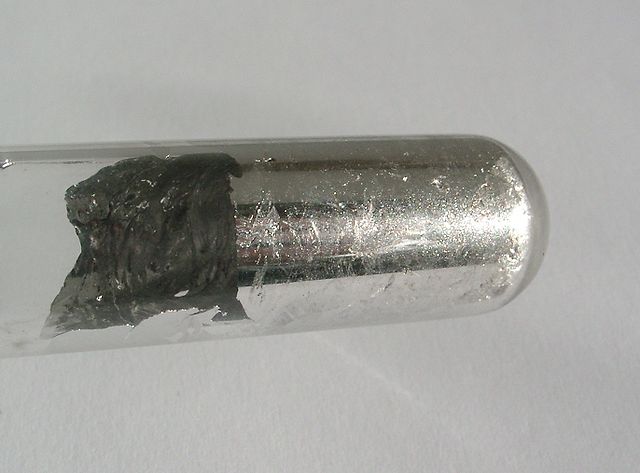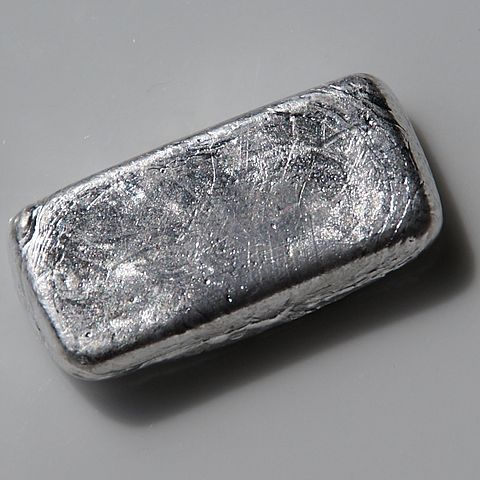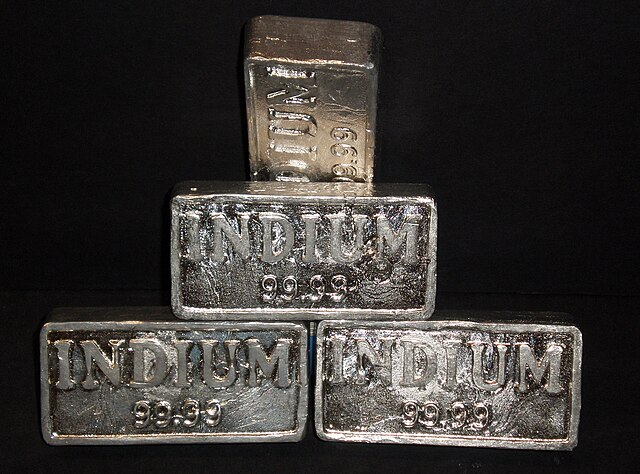Indium is an element found in the periodic table and is an important component of many industrial processes. Indium is a relatively rare element, but has a wide variety of uses in a number of industries.
In this article, we take an in depth look at everything you need to know about Indium.
Introduction
We will begin by discussing the discovery of Indium, including when and where it was discovered and by whom. We will then move on to discuss the chemical and physical properties of Indium, which are essential to understanding its uses. We will then move on to discuss the various uses of Indium in electrical, medical, and industrial applications. Finally, we will look at the global supply and mining of Indium, as well as safety protocols and environmental concerns associated with it.

Indium is a relatively soft, silvery metal that is considered to be a post-transition metal. It is found in Group 13 of the periodic table and has an atomic number of 49. It is classified as a metal, but is not as strong or durable as other metals, such as iron or aluminum. Indium is also relatively rare, and is found in very small amounts in the Earth's crust.
Indium is also an interesting element, as it is both malleable and ductile, making it easy to shape into different forms and use for various purposes. It has a relatively low melting point, making it ideal for use in many applications. Indium is also a relatively good conductor of heat and electricity, making it useful for a wide variety of electrical uses.
Indium has a wide variety of uses in today's world. It is used in the production of electronic components, such as transistors, diodes, and LED chips. It is also used in medical imaging equipment, such as X-ray machines, as well as in the manufacture of computer chips, LCD screens, and solar cells. Finally, it is also used in the aerospace industry, in the production of jet engines and other aircraft components.
Understanding Indium and its various uses is important for a wide range of industries. By understanding Indium, companies can better utilize its various properties and maximize its potential in their applications. With this in mind, let's take a closer look at the discovery of Indium, its properties, and its various uses.
Discovery of Indium
Indium is one of the few elements in the periodic table that was discovered by accident. In 1863, German chemists Ferdinand Reich and Hieronymous Richter discovered the element while they were studying the properties of zinc ore found in the mines of Zawar in India.
The chemists noticed a strange new line on a spectrogram of the ore as they conducted their research. Through further investigation, they discovered a new element that they named ‘indium’ based on the Latin word for India, which is where the ore was found.
Although the chemists were the first to discover indium, it wasn’t until the following year that the element was officially recognized by the scientific community. In 1864, the chemists published their findings in a paper titled “On the New Element Indium”, which was presented at the Academy of Sciences in Berlin. This paper provided the first description of the element and was instrumental in establishing indium’s place in the periodic table.
Indium is a rare element that is only found in trace amounts in most mineral deposits. It is believed that indium was a part of the original formation of the Earth, but its scarcity on the planet has made it difficult to identify and study. Indium is typically found in zinc, lead, bismuth, and other minerals, and is usually mined as a byproduct of these elements.
In addition to its discovery in India, indium has been found in several other countries around the world. In the early 1900s, large deposits of the element were discovered in Canada, Australia, South Africa, and the United States. These discoveries quickly established indium as an important element in the global market.
Although indium was discovered in 1863, it wasn’t until the 20th century that its unique properties were fully understood. During this time, scientists conducted a number of experiments to explore the element’s potential applications. This research led to the development of several groundbreaking technologies and products that rely on indium, including LCD displays, solar panels, and medical imaging equipment.
Today, indium is an essential component in a variety of industries, from electronics and telecommunications to medical and defense. Its unique properties make it a valuable resource that will continue to be sought after for many years to come.
Properties of Indium
Indium is a chemical element with a symbol of In and an atomic number of 49. It is a silvery-white, soft, malleable and ductile metal. It is found in small amounts in zinc ores and is usually produced as a by-product of zinc production. Indium has a melting point of 156.60 C and a boiling point of 2080 C.
It is considered to be one of the most rare elements on Earth, with an estimated abundance of 0.25 parts per million in the Earth’s crust. It is typically found in the form of indium sulfide, indium arsenide, and indium antimonide.
Indium has unique chemical and physical properties that make it useful in a wide range of applications. Chemically, indium is a post-transition metal and is considered to be relatively chemically inert. Indium does not readily react with water or oxygen and has a low corrosion rate. It has a single +3 oxidation state, which makes it relatively easy to work with in comparison to some other metals.
Physically, indium is a soft metal with a low melting point, making it suitable for soldering and other low-temperature applications. Indium has a low coefficient of expansion, making it well-suited for use in thermal expansion applications. It is also a good thermal and electrical conductor and can be used in high-temperature applications.
At the atomic level, indium has a relatively simple structure, with a single electron shell. It has a valence of three and is found in the 4th period of the periodic table. Its electron configuration is 2, 8, 18, 18, 3. This electron configuration makes indium very stable and difficult to oxidize, allowing it to maintain its properties over time.
Indium is also an unusual element in that it has a low abundance on Earth but is very useful in a number of applications. Its unique combination of chemical and physical properties makes it well-suited for a number of uses, ranging from electrical and medical applications to industrial applications. As such, it is an important element to understand.
Uses of Indium
Indium is a versatile element with a variety of unique uses and applications. Its properties, such as malleability and ductility, make it a valuable material for both industrial and medical applications. In this section, we will explore the various uses of indium.
One of the most common uses of indium is in electrical applications. Indium is a great conductor of electricity, and its use in electrical components is increasing every day. Its malleability allows it to be used in soldered connections, such as in printed circuit boards and in connectors.
Indium is also used in the manufacture of flat panel displays, such as monitors, television screens and mobile device screens. Its unique properties also make it an ideal material for use in photovoltaic cells, solar cells and other energy-saving applications.
Indium also has a wide range of medical applications. Its non-toxic properties make it an ideal material for use in medical devices and implants. Indium is often used in the construction of prosthetic devices, and its malleability can be used to create precision surgical instruments.
Its non-corrosive nature makes it a great material for use in medical tools and equipment. Indium is also used in radiotherapy, as it is able to absorb X-rays and gamma rays.
Industrial applications of indium are also increasing. Its extremely low melting point and its ability to form strong alloys make it an ideal material for use in soldering processes. Its malleability and ductility make it a great material for creating precision parts. Indium is also used in the production of bearings, as its low friction properties make it a great choice for this application. Indium is also used in the production of glass, ceramics, and semiconductors.
Indium is increasing in use and popularity, and its unique properties make it an ideal material for a variety of applications. Its malleability, low melting point and ability to form strong alloys make it a great choice for use in electrical components, medical devices, and industrial parts. Its non-corrosive nature and non-toxic properties make it a great choice for use in medical tools and equipment.
Its low friction nature makes it a great choice for use in bearings, and its ability to absorb X-rays and gamma rays make it an ideal material for use in radiotherapy. Indium is a valuable and versatile material, and its uses are growing every day.
Mining and Supply of Indium
The global production of indium is an integral factor in the global supply chain. As a rare element, indium is primarily found in zinc ores, with a smaller percentage in copper and lead ores. As a result, the availability of indium is dependent upon other mining operations in addition to direct indium production.
The major producers of indium globally include China, South Korea, and Japan. These nations are responsible for the majority of the world’s indium production. China is the leading producer, accounting for around 80% of the world’s indium production. South Korea and Japan account for the remaining 20%.
The major indium reserves in the world are located primarily in China and Kazakhstan. Within China, the world’s largest indium reserves are found in the Yunnan and Sichuan provinces. These two provinces are responsible for the vast majority of China’s indium production. Kazakhstan is the second-largest producer of indium, with the majority of their indium reserves being located in the Karaganda region.

Indium production is highly susceptible to fluctuations in the prices of other metals. These fluctuations can have a direct impact on the availability of indium to the global market. As the demand for other metals such as zinc, copper, and lead increase, this can lead to the increased extraction of indium from these ores. The global indium supply has seen periods of stability and flux over the past few years, largely due to changes in the global demand for other metals.
The mining of indium can also lead to potential environmental risks, as indium mining can cause land and water pollution. This is why it is of the utmost importance to adhere to safety protocols when mining for indium. Proper safety protocols involve the use of protective equipment, the use of protective clothing, and the proper disposal of hazardous materials.
The global supply of indium is an important factor to consider when looking at the various global markets. As a rare element, the availability of indium is of utmost importance and understanding the global production of indium is essential. With the major producers being China, South Korea, and Japan, and the major reserves being located in China and Kazakhstan, it is important to ensure that the proper safety protocols are put in place when mining for indium. This will ensure that the environment is not adversely affected and that the global availability of indium is not compromised.
Safety
Understanding the safety protocols for handling indium is of utmost importance. Indium is not considered a dangerous substance when handled properly; however, it does present some potential risks to both human health and the environment.
When it comes to human health, the greatest risk associated with indium is exposure to indium dust or fumes. Indium dust and fumes can cause irritation to the skin, eyes, nose, and throat if inhaled. Inhaling large amounts of indium dust can also lead to respiratory issues such as coughing and shortness of breath. It is therefore important to limit exposure to indium dust and fumes by taking safety precautions when handling indium.
Environmental risks of indium mining include water pollution and the release of indium into the air. If indium is released into water, it can cause a decrease in oxygen levels, which can disrupt the natural balance of aquatic ecosystems. Additionally, if indium is released into the air, it can be inhaled by humans and animals, which can lead to adverse health effects.
In order to minimize the risks associated with indium, it is important to follow safety protocols when handling the material. These safety protocols include wearing protective clothing such as facemasks and gloves when handling indium dust, as well as using approved respirators when dealing with indium fumes. Additionally, any indium dust that is generated should be collected and disposed of properly. It is also important to keep the area where indium is being handled well-ventilated in order to reduce the risk of exposure to indium dust and fumes.
Finally, it is important to be aware of the potential hazards of indium and to take the proper safety precautions in order to avoid any potential health or environmental risks. Following the safety protocols outlined above can help to ensure that any exposure to indium is minimized and that the risks associated with the material are kept to a minimum.

Information
| Indium | ||||||||||||||||||||||||||
|---|---|---|---|---|---|---|---|---|---|---|---|---|---|---|---|---|---|---|---|---|---|---|---|---|---|---|
| Pronunciation | IN-dee-əm | |||||||||||||||||||||||||
| Appearance | silvery lustrous gray | |||||||||||||||||||||||||
| Standard atomic weight Ar°(In) | ||||||||||||||||||||||||||
|
||||||||||||||||||||||||||
| Indium in the periodic table | ||||||||||||||||||||||||||
| Atomic number (Z) | 49 | |||||||||||||||||||||||||
| Group | group 13 (boron group) | |||||||||||||||||||||||||
| Period | period 5 | |||||||||||||||||||||||||
| Block | p-block | |||||||||||||||||||||||||
| Electron configuration | [Kr] 4d10 5s2 5p1 | |||||||||||||||||||||||||
| Electrons per shell | 2, 8, 18, 18, 3 | |||||||||||||||||||||||||
| Physical properties | ||||||||||||||||||||||||||
| Phase at STP | solid | |||||||||||||||||||||||||
| Melting point | 429.7485 K (156.5985 °C, 313.8773 °F) | |||||||||||||||||||||||||
| Boiling point | 2345 K (2072 °C, 3762 °F) | |||||||||||||||||||||||||
| Density (near r.t.) | 7.31 g/cm3 | |||||||||||||||||||||||||
| when liquid (at m.p.) | 7.02 g/cm3 | |||||||||||||||||||||||||
| Triple point | 429.7445 K, ~1 kPa | |||||||||||||||||||||||||
| Heat of fusion | 3.281 kJ/mol | |||||||||||||||||||||||||
| Heat of vaporization | 231.8 kJ/mol | |||||||||||||||||||||||||
| Molar heat capacity | 26.74 J/(mol·K) | |||||||||||||||||||||||||
Vapor pressure
|
||||||||||||||||||||||||||
| Atomic properties | ||||||||||||||||||||||||||
| Oxidation states | −5, −2, −1, 0, +1, +2, +3 (an amphoteric oxide) | |||||||||||||||||||||||||
| Electronegativity | Pauling scale: 1.78 | |||||||||||||||||||||||||
| Ionization energies |
|
|||||||||||||||||||||||||
| Atomic radius | empirical: 167 pm | |||||||||||||||||||||||||
| Covalent radius | 142±5 pm | |||||||||||||||||||||||||
| Van der Waals radius | 193 pm | |||||||||||||||||||||||||
| Other properties | ||||||||||||||||||||||||||
| Natural occurrence | primordial | |||||||||||||||||||||||||
| Crystal structure | body-centered tetragonal | |||||||||||||||||||||||||
| Speed of sound thin rod | 1215 m/s (at 20 °C) | |||||||||||||||||||||||||
| Thermal expansion | 32.1 µm/(m⋅K) (at 25 °C) | |||||||||||||||||||||||||
| Thermal conductivity | 81.8 W/(m⋅K) | |||||||||||||||||||||||||
| Electrical resistivity | 83.7 nΩ⋅m (at 20 °C) | |||||||||||||||||||||||||
| Magnetic ordering | diamagnetic | |||||||||||||||||||||||||
| Molar magnetic susceptibility | −64.0×10−6 cm3/mol (298 K) | |||||||||||||||||||||||||
| Young's modulus | 11 GPa | |||||||||||||||||||||||||
| Mohs hardness | 1.2 | |||||||||||||||||||||||||
| Brinell hardness | 8.8–10.0 MPa | |||||||||||||||||||||||||
| CAS Number | 7440-74-6 | |||||||||||||||||||||||||
| History | ||||||||||||||||||||||||||
| Discovery | Ferdinand Reich and Hieronymous Theodor Richter (1863) | |||||||||||||||||||||||||
| First isolation | Hieronymous Theodor Richter (1864) | |||||||||||||||||||||||||
|
||||||||||||||||||||||||||
Facts
Indium is a chemical element with the symbol In
Indium has an atomic number 49
Indium is the softest metal that is not an alkali metal.
It is a silvery-white metal that resembles tin in appearance
It is a post-transition metal that makes up 0.21 parts per million of the Earth's crust.
Indium was discovered in 1863 by Ferdinand Reich and Hieronymous Theodor Richter by spectroscopic methods
They named it for the indigo blue line in its spectrum
Indium has no biological role.
Its compounds are toxic when injected into the bloodstream.
Indium does not react with water.
Indium has 39 known isotopes, ranging in mass number from 97 to 135
Only two isotopes occur naturally as primordial nuclides: indium-113, the only stable isotope, and indium-115
Indium-115 makes up 95.7% of all indium
Indium has 49 electrons
China is a leading producer of indium (290 tonnes in 2016), followed by South Korea (195 t), Japan (70 t) and Canada (65 t)
The primary consumption of indium worldwide is LCD production
Indium is used in the production of LCD monitors, televisions, and display screens
